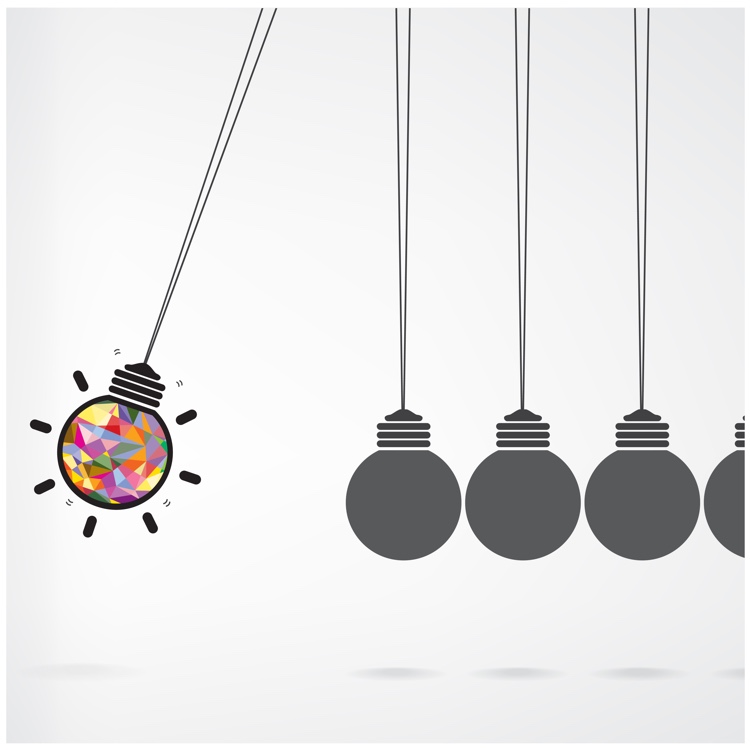7 Tricks to Kickstart Your Creativity

I haven't always been good at being creative. In fact, my business partner used to complain that I would "say no to everything" but never come up with any alternative proposals. It turns out the problem was that I didn't realize that there were two "modes" of thinking, what I call execution mode and creativity mode, and that I needed to deliberately swap between them.
In execution mode, you focus on the details of how to make something work. What is going to get you from point A (where you are) to point B (a well defined location) in the shortest possible time with the least amount of risk. This mode of thinking is absolutely required in engineering, finance, operations, and other detail-oriented lines of work. The problem is that it is absolutely deadly when it comes to creativity, shutting ideas down before they even have time to germinate.
On the flip side is creativity mode. In this mode, anything goes. You open yourself to possibility without concern about details. Anything is possible, or rather, the time for worrying about what is possible is sometime later. This is the mode where all great ideas, new innovations, and creative possibilities come from. The important thing to know is that you can't be in both modes simultaneously. I had to learn to deliberately swap myself from execution mode into creativity mode.
Here are 7 tricks that I use to do exactly that.
7. Go for a run (or a walk)
This is probably the first thing in my toolbox whenever I get stuck on something. There's something about engaging in physical exercise that lets your brain "unlock" from whatever it is stuck on. I can't count the number of times I've been struggling to come up with a solution for a tricky problem or a creative alternative to a sticky situation, gone for a run, and then had the solution magically come to me in the shower afterwards.
6. Play word games
Sometimes silliness is just the thing to knock me out of execution mode and into creativity mode. With this tool I'll start playing around with the exact words of the problem, trying to create puns with them and randomly connect other things that "sound" similar even knowing they have nothing in common. Having to come up with a blog post might morph into a post in the ground, into a pole, and before you know it I'm doing research on the fitness impacts of pole dancing as compared to a gym membership. :P
5. Play "Yes And"
This one borrows from Improv Theatre, and is a technique to be used in a group or with a partner. The idea is that you disallow yourself from rejecting anything at all, but in response to any idea you have to respond with "Yes and" with another idea that builds on it. This keeps ideas flowing freely, each building on the other, without ever shutting down your creativity with rejection.
4. Make a Mind Map
I use Mind Maps particularly when I'm trying to figure out content for a post or a speech about a particular subject. They're a great tool for getting out all of the details that are lurking around in different corners of your mind, and then connecting them in interesting and novel ways.
3. Try a beer-storm
Probably one of the most fun things to do as a group. If you've got a tricky problem in need of a creative solution, get your team together with a white board and a round of beer. Alcohol has a way of reducing the barriers inherent in our minds, creating a free flow of ideas. Don't worry about ranging into the inappropriate; take a picture when you're done and trim away the worst the next day.
2. Meditate
Meditation is one of the areas of my life that I wish I was better at. I've tried to keep a regular meditation practice a few times, and keep falling out of it, but when I'm able to it is incredible effective at helping me approach the world with curiosity and humor, which in turn makes creativity flow.
1. Write a morning journal
Dreams can be bizarre, disoriented, and unrealistic, but that is because they are unfiltered creativity straight from our subconscious. Writing the moment you wake up in the morning without worrying about what it is you capture on the page is a great way to tap into that subconscious and supercharge your creativity.
What About You?
What tricks or tools do you use to take your creativity to the next level? Tell me about them in the comments!